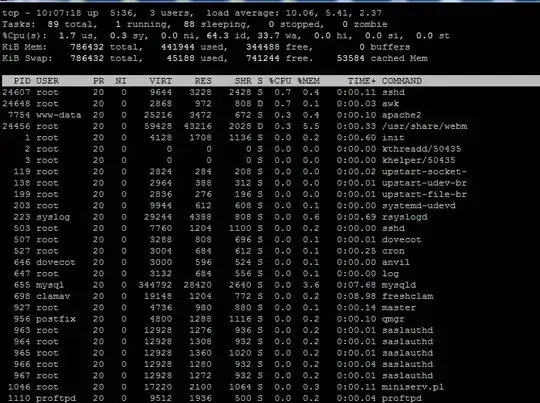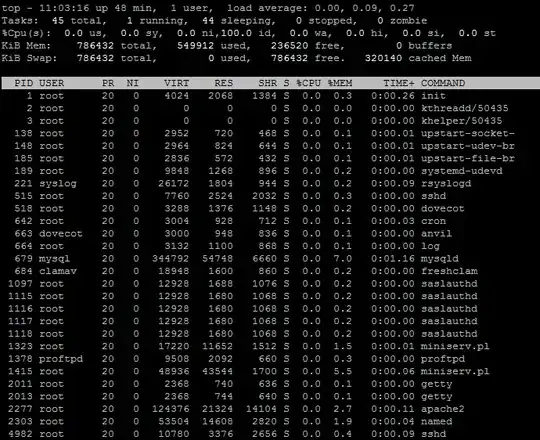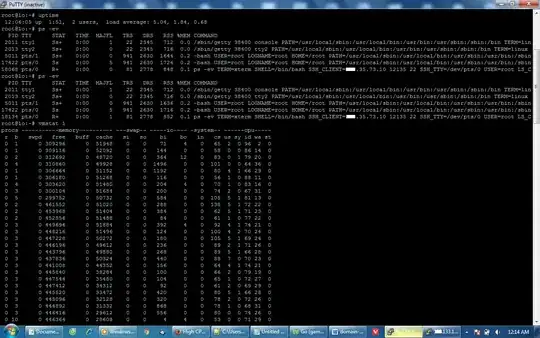Over the past 2 days I started having problems with a server which has a few users on it. The server is an OpenVZ VPS. Normally when I experience high CPU usage, I always use top command to find out the reason. But for this server, I don't receive any useful info from the top command. Below is an example screenshot for the problem that I am experiencing

As can be seen in the screenshot, the %CPU column is almost always zero for all process, and practically most of the time I see all values are zeroes, yet the CPU usage reached up to 10 cores!
I'm totally lost and don't know what to do to find out the reason. So I'd like to ask if anyone have any idea about the possible causes that I am facing? Could it be due to the server issues?
Thanks for any suggestion!
Edit:
Please note that this screenshot is taken only when high load happens. It happens every few hours, and last for about 20 minutes. Normal usage is only about 0.0-0.2 cores. Below is an example of normal usage.
Further update
Just now it happened again, here is the screenshot of the suggested commands
I'm sorry that I'm a noob about these, but if I understand correctly, there is not anything wrong with the disk usage, io usage is very low.
Last update
I have tried using the suggested methods using vmstat, ps given in the answers and comments, but couldn't find useful information. When the spike happens, I even stop apache, mysql but it didn't help. I finally contacted the VPS provider and requested for changing into another node. He told me that he was aware of the issues with the node, which is being heavily abused by malicious customers recently, and he is working to fix the issues. So I guess I don't have to do anything from my end now. Nevertheless, I would like to thank all members who have given suggestions, making this Q&A useful for future reference!

